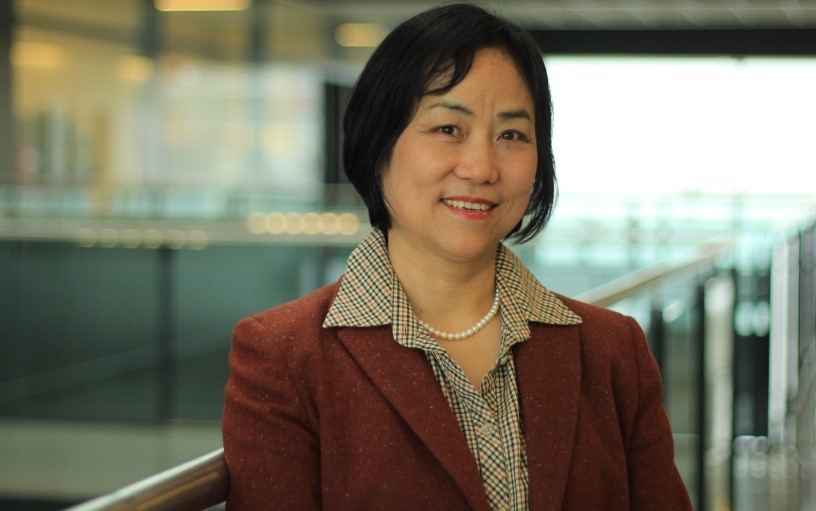BBDC Member Profile
Shirley X. Y. Wu, PhD
January 7, 2022
By Krista Lamb

For Dr. Shirley X. Y. Wu, a lifelong curiosity and desire to find answers imbues all of her research. In her role as a professor and scientist at the Leslie Dan Faculty of Pharmacy at the University of Toronto, she is able to explore new ways to use polymers to develop drug delivery systems. “As principal investigators, we have freedom, if we can get a grant, to explore different areas.” Wu says. “My main goal is to help patients.”
Wu is working on that goal using her interest in polymer science engineering to develop new forms of drug delivery. Her interest in the potential of polymers was stoked during her PhD studies with Dr. Robert Pelton at McMaster University in Hamilton. Pelton is a pioneer in the field and during her studies with him, Wu began the work that would become the basis of her own research. She then went on to complete her postdoctoral studies at the University of Toronto with Dr. Ping Lee.
In the field of diabetes research, Wu’s work has shown great promise for developing new options for insulin and glucose delivery. “I initially worked on stimulus response for polymers. That’s related to the glucose responsiveness and that lead me to diabetes research,” she says.
After reviewing the research from pioneering scientists in the field, Wu noted that polymers will respond to different stimuli, like glucose concentration, temperature, and pH. While her research has taken her into the fields of cancer and Alzheimer’s disease, she was particularly struck by how her work with polymers could support an unmet need in diabetes, in particular type 2 diabetes.
Wu and her team are using polymers to create a microneedle patch, which she describes as similar to the spikes on a cat’s tongue, that will adhere to the skin and sense blood sugar levels. It would then release insulin or glucagon as required. It is, she explains, like “an artificial islet.” There is a long road to travel before this innovative but challenging idea becomes a clinical reality, but Dr. Wu is undeterred by the challenge.
Unlike an islet transplant, which would require donor islets and long-term immunosuppression, Wu’s system would provide painless monitoring and delivery. “The mechanism detects the glucose level, and then releases insulin or glucagon. There are two different mechanisms to trigger the release; one is at a higher glucose concentration and the others at lower glucose concentration, but these two can be used separately or in combination,” Wu says.
Her team is currently working on developing this novel system and ensuring it is safe and stable, which will include moving forward into large animal models. Wu is also studying the opportunities for scale up and commercialization, as it will be essential to understand how to safely develop such a complex technology in large quantities.
For Wu’s lab, the end user is always top of mind in all of their work. “If I can do something to benefit patients, that’s my interest and my goal for research,” she says “My team members have the same goal. We want to see our scientific research translated to human use to help patients.”
